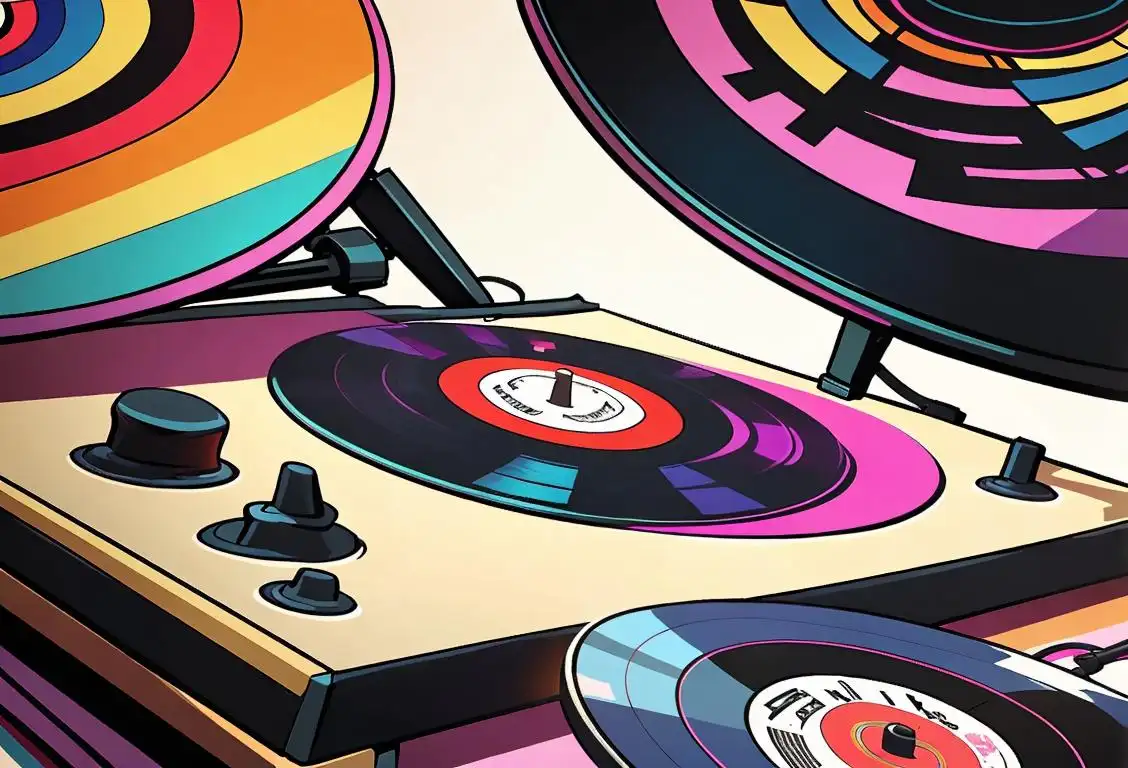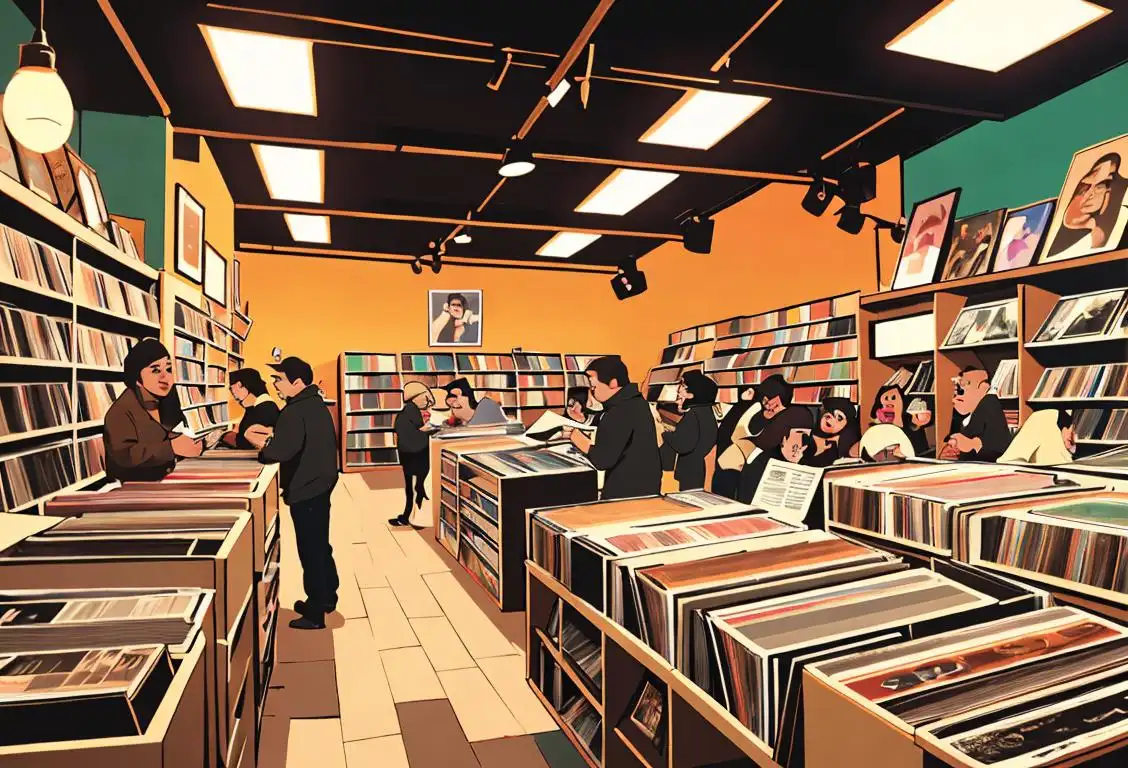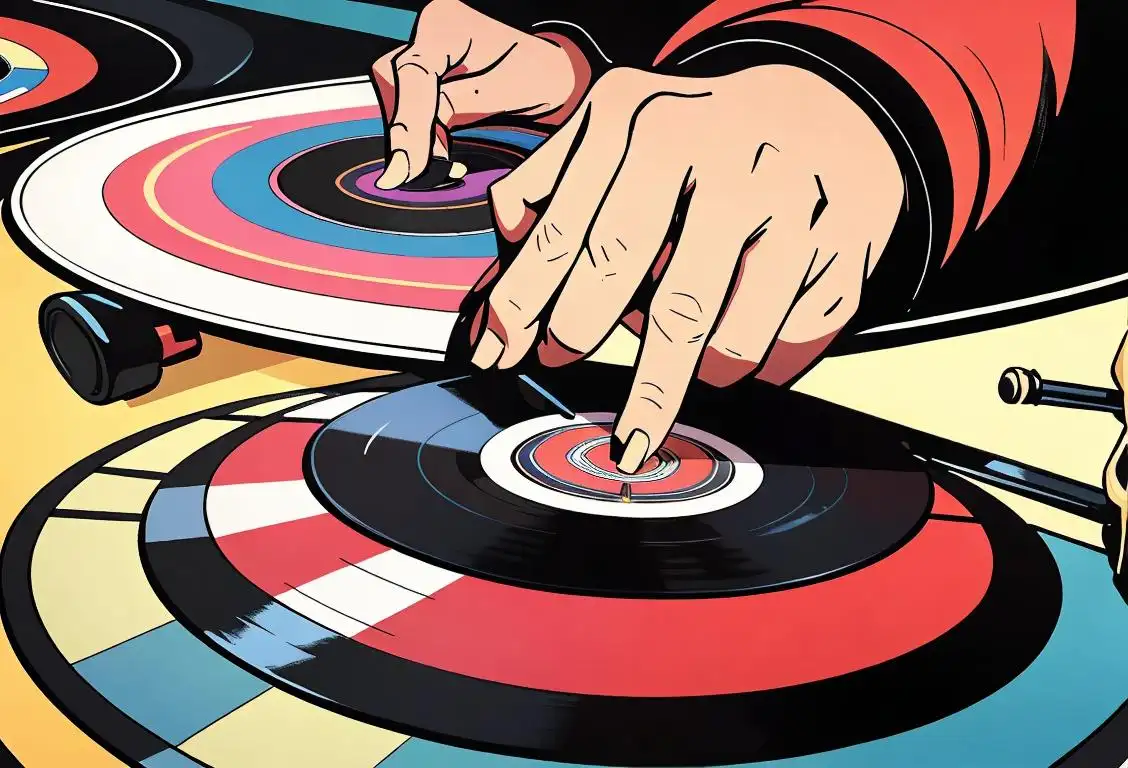National Vinyl Record Day

Heads up, music and nostalgia lovers! It's time to dust off those old vinyl records, and get your turntables hitched for a spin. Let's get ready to celebrate National Vinyl Record Day. Any one who still cherishes the crackling sound of music on these groovy discs will love to learn the internet history of this day.
When is Vinyl Record Day?
It's national vinyl record day on the 12th August.
Weave the Spin of Nostalgia
If music touches your soul, then vinyl records are the nostalgia-laden magic carpets that take you back to the golden era of music. According to our wide web of internet data, there were 2863 mentions of National Vinyl Record Day online. Need a reason to celebrate? On August 12, 2020, the internet saw the most mentions of this day, making us believe that the world was perhaps partying hard with a piece of classic vinyl on the turntable.
The Day the Music Didn't Die
National Vinyl Record Day celebrates the warm, fuzzy memories associated with the rich sound of a stylish spinning disc. While digital music almost pushed vinyl records to the brink of obscurity, their revival has been nothing short of a melodious renaissance. So on this day, dust off those vinyl records, and let the needle drop into the groove.
Cheers to the Cherished Keepsakes
Serious collectors, casual hobbyists or the curious youngsters, all find a charm in the vintage vibes of vinyl records. As we all know, history repeats itself and nostalgically, we're back to valuing the tactile appeal and the artful covers of these tangible music mediums.
History behind the term 'Vinyl Record'
1887
Invention of the Phonograph
In 1887, Thomas Edison invented the phonograph, a device that could record and reproduce sound. The phonograph used a rotating cylinder covered with tinfoil to capture sound vibrations and play them back.
1894
Development of Flat Discs
Emile Berliner, a German-born American inventor, furthered the development of sound recording by introducing the idea of using flat discs instead of cylinders. He patented his gramophone, which used a flat disc made of hard rubber coated with a shellac resin to record and play sound.
1948
Introduction of Vinyl Records
In 1948, Columbia Records introduced vinyl records as a replacement for shellac discs. Vinyl records were made of polyvinyl chloride (PVC), a more durable and flexible material compared to shellac. This allowed for longer playing times and improved sound quality.
1954
Adoption of Microgroove Technology
Columbia Records introduced microgroove technology in 1954, which revolutionized the vinyl record industry. The new microgroove records had narrower grooves, allowing for longer playing times and better fidelity. This advancement made vinyl records the dominant format for music consumption.
1982
Introduction of the Compact Disc
In 1982, the compact disc (CD) was introduced, marking the beginning of the decline of vinyl records. CDs offered digital audio quality, smaller size, and the ability to skip tracks effortlessly. The popularity of CDs ultimately led to a significant decrease in vinyl record sales.
2007
Vinyl Resurgence
Despite the rise of digital music formats, vinyl records experienced a resurgence in the 2000s. Collectors, audiophiles, and music enthusiasts started embracing vinyl records for their warm sound quality, tactile experience, and album artwork. Vinyl sales have been steadily increasing, with many artists and record labels releasing new albums on vinyl.
Did you know?
Did you know that ‘Saturday Night Fever’ was the first vinyl record to sell over 1 million copies in the UK? Now that's a record to be remembered while celebrating National Vinyl Record Day.Tagged
fun nostalgia music collectibles records vinyl cherished keepsakesFirst identified
12th August 2015Most mentioned on
12th August 2020Total mentions
2863Other days
Vinyl Record Day
Record Store Day
Vinyl Day
Old Rock Day
Jingle Day
Jukebox Day
One Hit Wonder Day
Baseball Card Day
Emo Day
Jonas Brothers Day








